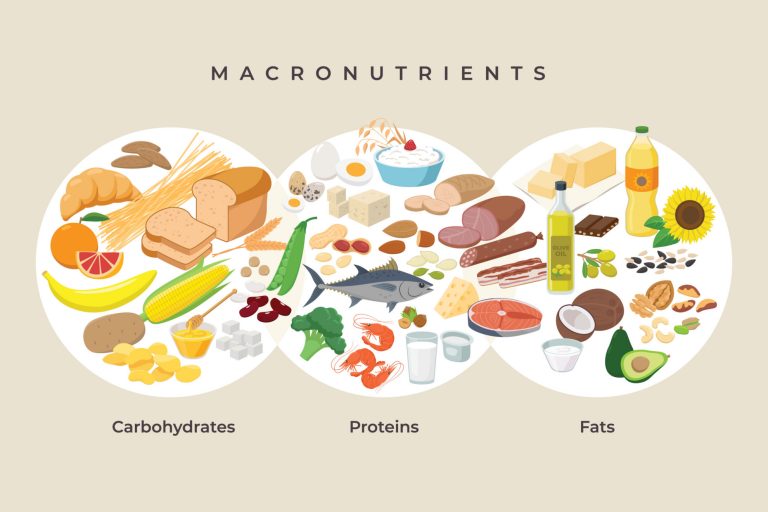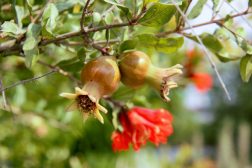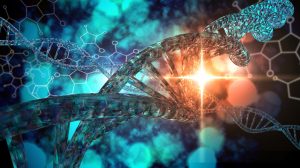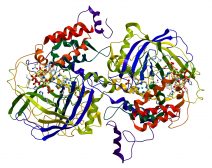A Balanced Diet – Carbohydrates and Fat

Carbohydrates, fats and proteins – dietary sources
Table of Contents
Alongside the numerous vitamins that are required as part of a healthy diet, we must also eat food containing a variety of other materials to ensure the day to day running of our body.
These building materials are essential to the daily maintenance and growth of a human body, as each are required in the various biological processes that allow us to survive and fight off infection.
Carbohydrates
Carbohydrates are a major source of energy and contain all the necessary building materials to create glucose, a compound that is used in numerous areas across animals and plants. Glucose itself can be found abundantly in sweet fruits, as can fructose, and is the body’s method of delivering energy to cells across our body (see tutorials in ATP and Cell Respiration).
Complex sugars deemed disaccharides due to their more complex molecular structure, consist of monosaccharides – the fundamental unit of a carbohydrate. Glucose and fructose are examples of monosaccharides.
A summary of carbohydrates can be found below:
- Lactose – A disaccharide carbohydrate found in milk that is a compound of glucose and galactose.
- Maltose – A disaccharide that is found abundantly in germinating grain, as they have a large reserve of starch which can be broken down by the enzyme amylase.
- Sucrose – Found in sugar cane, sucrose can be broken down by the enzyme sucrase into fructose and glucose.
- Glycogen – The body’s preferred storage form of glucose, which can be broken down by glucagon. More information can be seen in the blood/sugar homeostasis tutorial surrounding the relationship between glycogen and glucose.
- Deoxyribose – A pentose sugar that forms the very genetic material responsible for the creation of all proteins in the body, DNA.
- Ribose – A pentose sugar.
- Cellulose – A compound of 4 glucose molecules that are present in the cell walls of plants, and is the most abundant biological material on Earth, due to its tensile nature in acting as a barrier to the outside environment (see Cell Defense tutorial). Cellulose is a type of fiber, which is required in our diet to help digestion.
All in all these malleable compounds that are carbohydrates form an essential part of our diet, with disaccharides and complex carbohydrates acting as building blocks themselves while also being capable of being broken down into a more simple monosaccharide.
Fats
Fats are an important part of a healthy balanced diet, and also act as a means of insulation in our bodies when it is stored under the skin as stored energy, due to them containing twice as much potential energy as carbon. Fats can be broken down into 5 different categories:
- Triglyceride – These are formed by glycerol and a set of 3 fatty acids, which together form a triglyceride.
- Phospholipid – These consist of a glycerol and phosphate molecule and two fatty acids, which form the cell membrane of cells and responsible for transferring other fats around the body.
- Wax – Consisting of alcohol and fatty acid molecules, these types of fat have waterproof qualities and is an important constituent in many species’ lives.
- Glycolipid – Any type of fat that also contains a carbohydrate
- Steroid – Cholesterol and cortisone are examples of steroid types of fat.
Fats are an important part of a healthy human diet, due to the compounds they contain as well as their potential energy that is stored in our bodies.
The next tutorial investigates the need for proteins and minerals as part of a healthy balanced diet.
You will also like...

Fruits, Flowers, and Seeds
This tutorial deals with the structure and function of flowers, fruits, and seeds. Also included here are the types of f..

Evolution of Life – Ancient Earth
Autotrophs flourished, absorbing carbon and light. Soon after, primitive life forms that could assimilate oxygen thrived..

Population Regulation in an Ecosystem
With regard to the population size of a species and what factors may affect them, two factors have been defined. They ar..

Protein Activity and Cellular Metabolism
Proteins have a crucial role in various biological activities. Get to know how proteins are able to perform as enzymes, ..

Origins of Life on Earth
Earth was created around 4.5 billion years ago and life began not long after. Primitive life likely possessed the elemen..

Plant Biology
Plantlife can be studied at a variety of levels, from the molecular, genetic and biochemical level through organelles, c..
